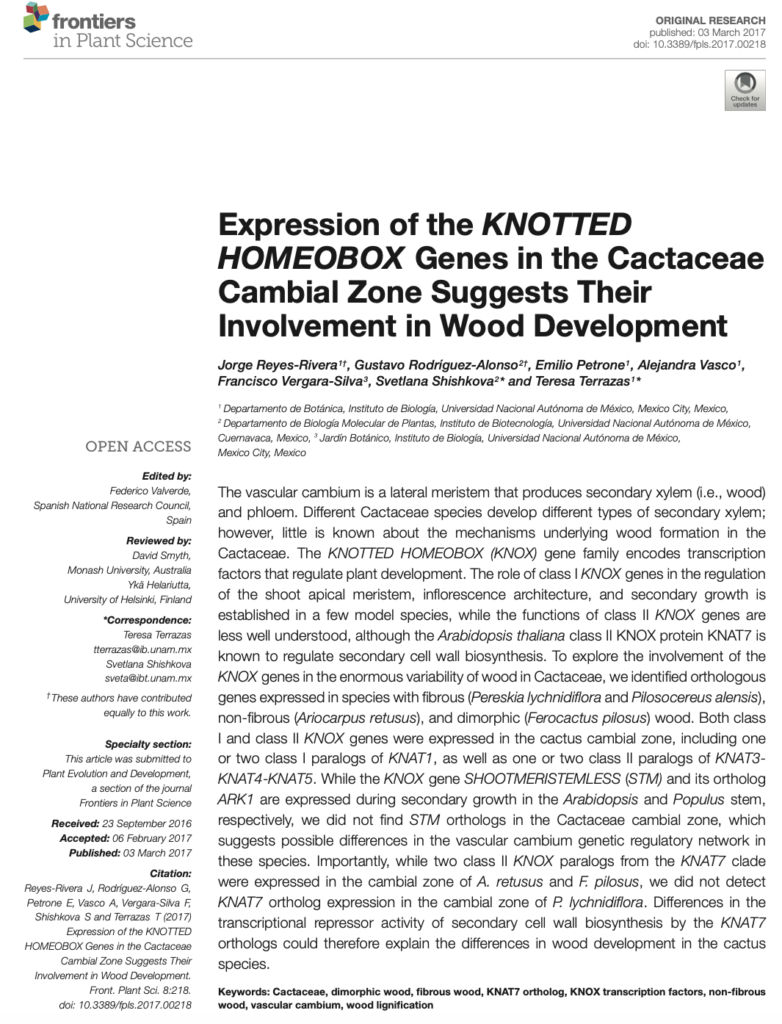Expression of the KNOTTED HOMEOBOX Genes in the Cactaceae Cambial Zone Suggests Their Involvement in Wood Development
Jorge Reyes-Rivera, Gustavo Rodríguez-Alonso, Emilio Petrone, Alejandra Vasco, Francisco Vergara-Silva, Svetlana Shishkova and Teresa Terrazas|Departamento de Botánica, Instituto de Biología, Universidad Nacional Autónoma de México, Mexico City, Mexico, Departamento de Biología Molecular de Plantas, Instituto de Biotecnología, Universidad Nacional Autónoma de México, Cuernavaca, Mexico, Jardín Botánico, Instituto de Biología, Universidad Nacional Autónoma de México, Mexico City, Mexico|Frontiers in Plant Science|2020|8:218 doi: 10.3389/fpls.2017.00218
The mechanisms that shape the development of the vascular cambium, a lateral meristem that produces secondary xylem (i.e. wood), that lead to wood formation in Cactaceae is currently understudied. Wood formation occurs later in development by genes regulating cell expansion, lignification and secondary wall deposition. Previous studies have shown four members of the KNOX gene family (PttKNOX1, PttSTM, PttKNOX2 and PttKNOX6) are higher expressed in these tissues. Class I KNOX genes are less abundant than class II KNOX =, with class I found in shoot apical and leaf meristems and class II found in differentiating cells and all mature plant organs. In this study, samples were collected form the cambial zone of adult individuals from four Cactaceae species with different wood types. Total RNA was extracted and PCR amplification targeting the KNOX genes was conducted using Mic qPCR cycler. The purified PCR products were sequenced by RNA-seq at the Beijing Genome Institute, Hong Kong. The sequences were aligned using Clustal Omega for phylogenetic analysis with MEGA7. It was found that Class I and Class II KNOX genes are expressed in the cambial zone, consisting of vascular cambium and derived cells of Cactaceae species with fibrous, non-fibrous and dimorphic wood. The findings suggest that the KNOX genes are involved in the formation of mature wood and that the KNOX7r1 paralog has broader functions in Cactaceae development. They were able to confirm monophyly of the KNOX proteins and assign the Cactaceae KNOX proteins into clades.
